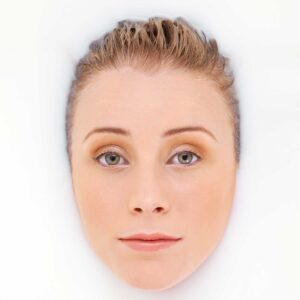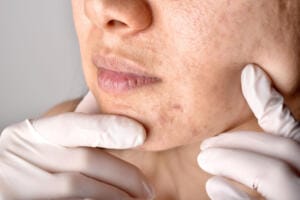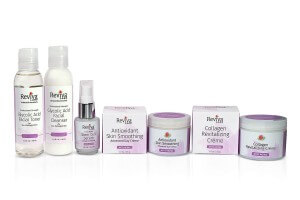Skin Care
How do you determine your skin type?
Everyone’s skin is different. That’s why there is no single product or regimen that will work for everyone. But in order to find the products and/or regimen that will work best for your skin, knowing your skin type is the first step.
A simple test to figure out your skin type
If you visit a dermatologist regularly – and you should! – she will be able to tell you your skin type, as well as the kinds of products recommended to work best for your skin. But if you’re trying to determine your skin type on your own, there is a simple method you can use.
- Cleanse your skin with a mild, gentle cleanser.
- Gently pat your skin dry.
- Wait 30 minutes.
- Examine your forehead, nose, cheeks, and chin for any sign of oil.
- After an additional 30 minutes check your T-zone (forehead, nose, and chin) for oil or shine.
- Assess how your skin feels when you smile or laugh. Does your skin feel tight across your cheeks?
While there are seemingly endless ways to describe skin types and skin needs, skin type can generally be broken down into dry, oily, or normal/combination. After performing the above test, if you see oil and/or shine on your cheeks, as well as your T-zone, your skin is likely oily. If your skin feels tight or rough, your skin would be described as dry. Combination skin is typically described as skin with an oily T-zone, but with dryness on the cheeks. Normal skin may be slightly oily in the T-zone, but without excessive oil, and with no dryness or tightness.
Some other indicators of skin type
The above simple test is an easy way to get an idea of your skin type. But there are a few other signs that can help determine your skin type.
Pores
Larger pores are typically a sign of oily skin, whereas very small pores can be a sign of dry skin. Both normal and combination skin may have some larger pores around the T-Zone, but the pores on the rest of the face are likely unnoticeable.
How does your skin feel?
You may be able to figure out your skin type just by how it feels. If it often feels tight or dry, then you probably have dry skin. If your skin is shiny & feels oily a majority of the time, your skin is probably oily. If you notice a lot of oil around your nose, chin, and forehead – but feel a little dry on your cheeks – you probably have combination skin. And if you’re fortunate enough to have normal skin, you probably aren’t experiencing any excess oil or tightness.
Remember, your skin type can change
As we age, our skin can change dramatically. And while people expect their skin to become dry with age, it’s not uncommon to develop oily skin in our later years. Hormones, and the aging process, can change our skin substantially, so it’s important to reevaluate your skin on a regular basis to make sure you’re using the proper products. Remember, too, that an annual dermatologist visit is an important part of your skin care routine – and an important part of your overall health care. A dermatologist can help you determine your skin type, advise you on what types of products are best for your skin – as well as which to avoid – and can be a great first line of defense against chronic skin conditions, or even skin cancer.








Hi there, I was wondering the anti agi g series will suitable for what age? Im 27 years old. Am I auitable to ise skincare from anti aging series. I have lots of comedone on my face and intereted in the 5% glyxolic acid.